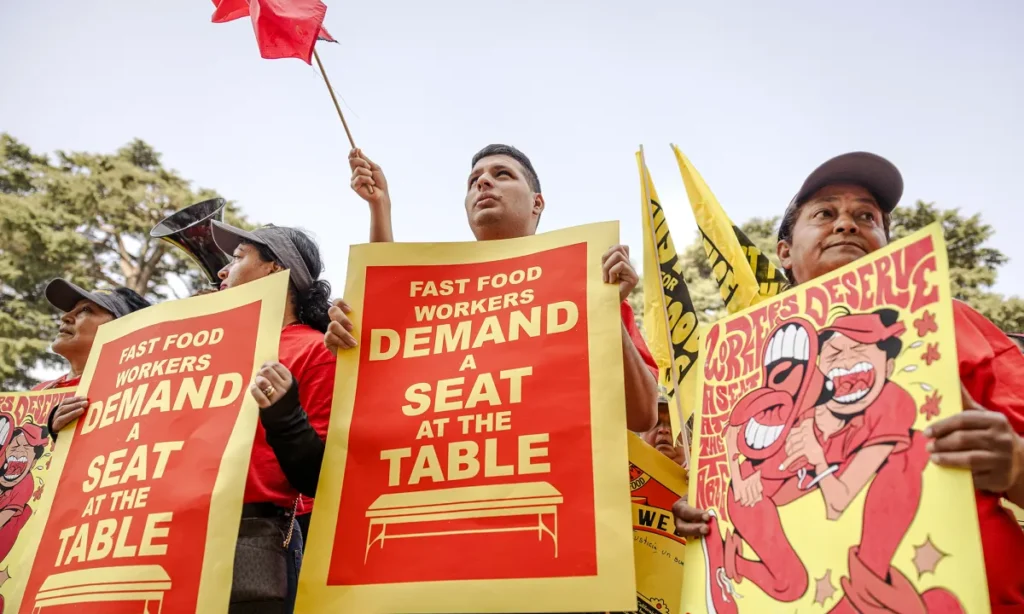Share
|
Getting your Trinity Audio player ready...
|
One could call it the “big squeeze.”
It’s the ever-increasing conflict between the state government’s current and projected tax revenues, which are drifting downwards, and the demands for billions of additional dollars for vital services, such as health care, homelessness and mass transit.
In January, when Gov. Gavin Newsom unveiled his initial budget for the 2023-24 fiscal year that begins July 1, he projected a $22.5 billion deficit – just a few months after boasting the state had a $97 billion surplus. This month, in a revised budget, he said the deficit had grown to $31.5 billion.

Dan Walters
CalMatters
Opinion
As worrisome as those numbers appear, they might be a best case scenario, according to the Legislature’s budget analyst, Gabe Petek.
“Based on our assessment, there is a roughly two‑thirds chance revenues will come in below May Revision estimates,” Petek said. “As such, while we consider the May revision revenues plausible, adopting them would present considerable downside risk.”
Moreover, Petek said that using the Newsom administration’s own projections and assumptions, “the budget condition would worsen in future years” with annual operating deficits of around $15 billion in the following two years, and hinted that the real shortfalls in the final years of Newsom’s governorship could be larger.
These estimates of a chronic and perhaps widening gap between income and outgo also assume that the state’s economy won’t be clobbered by recession.
Many economists believe that the Federal Reserve System’s increasing interest rates, meant to slow the economy and battle inflation, could trigger a recession within the next year. If it occurred, Newsom’s budget says, “revenues could decrease by $40 billion in 2023-24 alone, largely driven by losses in personal income tax,” adding that “revenue declines relative to the May Revision forecast could reach an additional $100 billion through 2026-27.”
While the state has amassed more than $30 billion in reserves to cushion the impact of recession, an even moderate economic downturn would quickly consume them, drowning the budget in red ink as the Great Recession did.
Funding Demands Outpacing Revenues
To summarize: California’s budget faces several years, at least, of budget difficulty. But the demand side of the fiscal ledger is not shrinking.
After the January budget was released, advocates for programs, particularly health care and social services, cranked up pressure on legislators to protect their slices of the pie. That pressure is even more intense with the May revision’s deficit increase.
They have been joined by three other major stakeholders seeking multi-billion-dollar increases in state aid: hospitals, transit systems and cities on the front lines of the state’s worst-in-the-nation homelessness crisis.
Hospital and transit system officials say they have been unable to fully recover from the impacts of COVD-19 on their patronage and finances and may be forced to shut down or at least reduce services. Mayors of the state’s largest cities say they need an additional $2 billion per year to maintain ongoing efforts to house those on the streets.
None of the three fared well in the May revision. Newsom offered just a $150 million loan fund to hospitals, didn’t include any extra money for local homelessness efforts, and only said he would be willing to discuss transit’s self-proclaimed “fiscal cliff.”
There’s little question that advocates for existing and new state financing would prefer that Newsom and the Legislature tap into reserves and/or raise taxes to satisfy their demands. In fact, the state Senate’s budget framework proposes a hike in corporate income taxes, although Newsom has rejected it.
Were California’s budget squeeze to continue or grow tighter, as seems likely, the remainder of Newsom’s governorship would be dominated by the difficult task of resolving it.
About the Author
Dan Walters has been a journalist for nearly 60 years, spending all but a few of those years working for California newspapers. He began his professional career in 1960, at age 16, at the Humboldt Times. For more columns by Walters, go to calmatters.org/commentary.
Make Your Voice Heard
GV Wire encourages vigorous debate from people and organizations on local, state, and national issues. Submit your op-ed to rreed@gvwire.com for consideration.


















